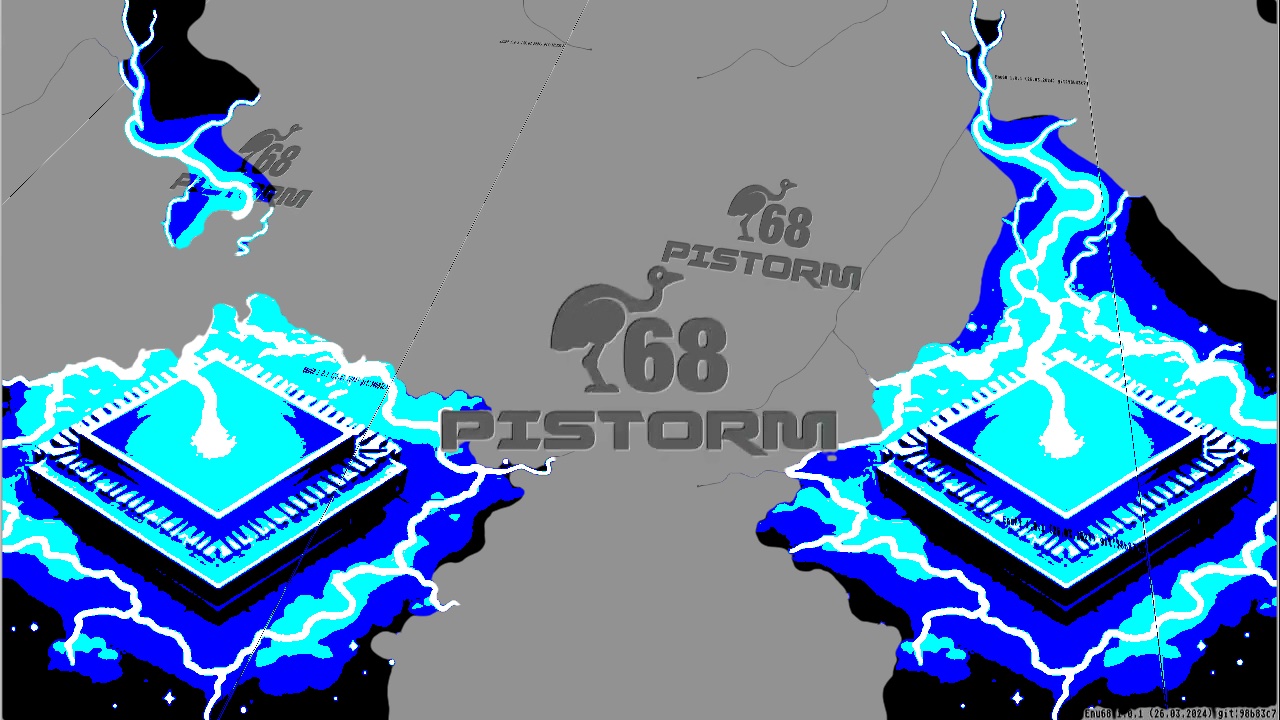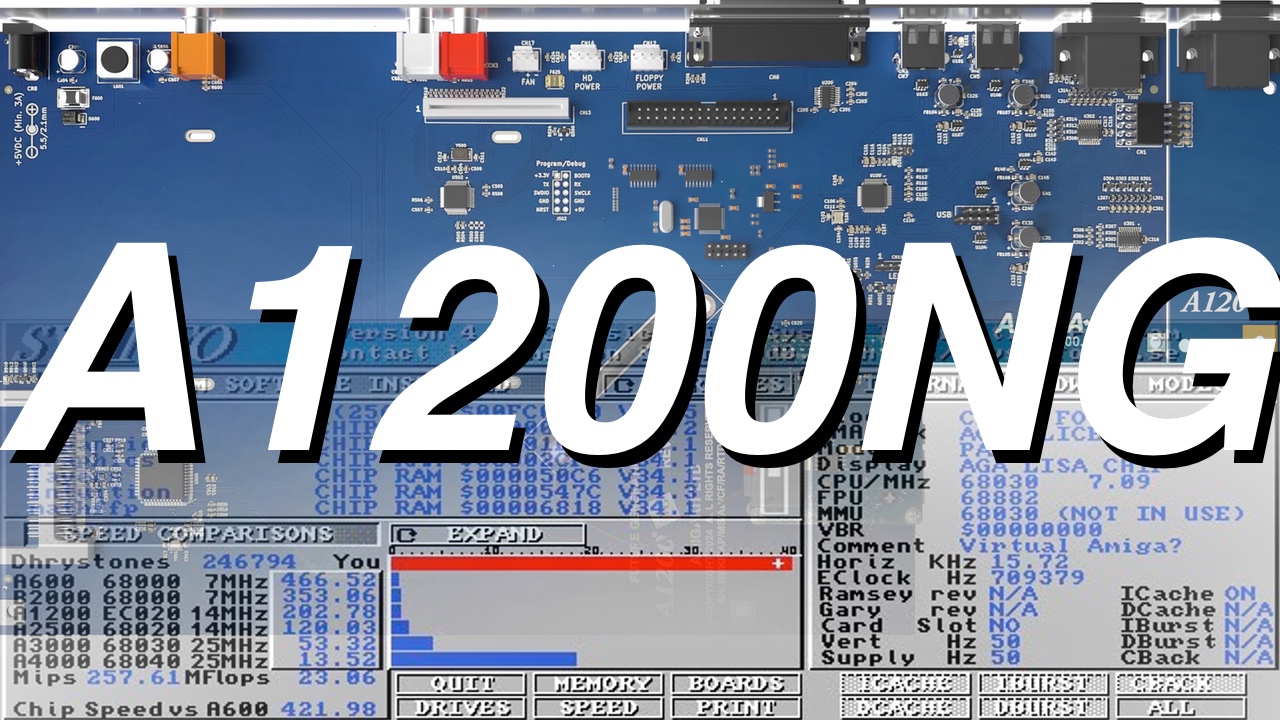When Commodore launched Amiga back in 1985. They would never think of that Amiga could actually output 14-bit playback sound. They promoted the Amiga as a machine capable of 8 bit sound. But no one at Commodore seemed to know how well designed Paula sound chip was made, or the designers didn’t get the notice that they deserve.
Amiga 1000, which was out in 1985 didn’t have the CPU power to be able to play raw wav files in 14 bit. But once you upgrade to a 68020 or higher. Play16 (can be found on Aminet as standalone and with GUI addons here) is capable of playing raw wav files in 14-bit quality directly to your speakers that are connected to your Amiga. However, to be able to play MP3s in full quality you need to reach 68060, 68080 or PowerPC.
You can get 14-bit sound on ANY Amiga, but sample rate quality is connected with the Amiga custom chipset
The differences start at what type of custom chipset your Amiga got. OCS is the first generation, then ECS and finally AGA.
Any Amiga can do 14 Bit. The Amiga chipset has two analog lowpass filters after the DAC. The stronger one with an effective frequency limit around 7 kHz (also called “LED filter” in some places) can be switched off. The second RC lowpass filter is fixed. That one is responsible for the “muffled” sound when replaying high rate content like MP3 or Wav.
Please note that it takes some configuration to get 44 Khz (up to 57 kHz) sampling rate out of the Amiga. Starting with ECS (A500+,A600 and later), the Amiga can play at more than approx. 28 kHz. The trick is: the Amiga chipset must be in a double scan display mode (DBLPAL, Productivity etc.). When running Picasso96, only a single environment variable needs to be set (from CLI):
SetEnv EnvArc:Picasso96/AmigaVideo 31kHz
With this setting, you can use higher sampling rates (after a reboot). AHI will honor this setting, too (and actually check for it before switching high sampling rates on). – Henryk Richter, apollo-core.com forum
So, you need an Amiga 500+, Amiga 600, Amiga 3000, Amiga 1200, Amiga 4000 or Amiga CD32 to do 14bit. Actually all of the Paula sound that you get out when playing CD32 is in theory 14bit and it supports up to 57 kHz. Paula has an 8 bit DAC and 6-bit volume control which can be combined to create 14-bit decoding.
Amiga 1000 can play 14 bit 28 kHz Sound quality without any usage of any external soundcard
All of the OCS Amigas can play up to 14 bit 28 kHz quality samples. OCS Amiga’s can play audio up to 28 kHz sample rate, which means that the first generation of Amigas can handle up to 28.000 samples per second. The ECS and AGA Amigas can handle up to 57.000 samples per second.
However, there is even a slight difference between ECS and AGA too. One of the differences between ECS and AGA is that ECS which is used by A600 and A3000 machines have an extra analog low pass filter in the audio path, limiting the bandwidth. Got this knowledge from a wiseguy on IRC.
Amiga was special for Commodore and now in 2017, I feel that I am getting more and more knowledge about how much more advanced the Amiga hardware architecture was made. I started up with real Amiga usage and interest in 1994 when I got my first Amiga 1200. But it is only within very few months, that I actually got to know about Amiga’s 14 bit sound possibility.
AtariST and Amiga battled over Sound quality
AtariST had MIDI, but Amiga had the possibility of produce great 8 bit sound quality in 1985. But to actually know that 14bit sound would be possible to do in 1985, is really something new for me. With 68020 and up, the Amiga is capable of giving much better sound quality, without spending millions on a new soundcard. This means that the Amiga had an advantage which took years to reach for PCs.
So. To conclude this article. The Amiga was way ahead of any computers for many years regarding it’s audio. Commodore could have achieved humongous popularity if only correct information about the Amiga was sent out to magazines and PC users which all think that Amiga can only do 8 bit sound. To achieve 14 bit sound isn’t even needed by using AHI 14 bit, experimental drivers. It’s already there in Paula to be used.
We hope we have managed to enlighten everyone a little bit more about the possibilities that Paula sound chip manages to produce.
Watch this interview with Glenn Keller, which created the Paula sound chip for the Amiga home computers
The Guru Meditation has made this awesome interview with Glenn Keller. He was a Commodore Amiga engineer that talks for the first time ever seen about the early years of Amiga. He also explains that he got mentored by Jay Miner, designing the Paula chip and even the AAA chipset later on.
Glenn Keller has managed to produce one of the best sound possibilities for a home computer. It is one of the few hardware components inside every Amiga that didn’t change much between OCS, ECS, and AGA. So to know that this chipset can play 14-bit output is really nice to know. Thanks to this thread on apollo-core.com forum for enlightening me and everyone reading this article.
So, let’s conclude. Amiga’s sound chip is 14 bit that supports beyond 58 kHz sampling rate regarding what type of CPU power and custom chipset that your Amiga got. So now you know more about what the different Amigas is capable of when buying one on eBay or at Finn alike websites.
Download these apps to get 14-bit playback on your Amiga
Play16 on AMINET (for 14-bit WAV play)(68020 or higher)
SongPlayer on AMINET (for 14-bit WAV and MP3)(68020 or higher – 68060 or higher for MP3 playback)(Requires MUI)
Source
apollo-core.com forum
Interview with Glenn Keller by The Guru Meditation





